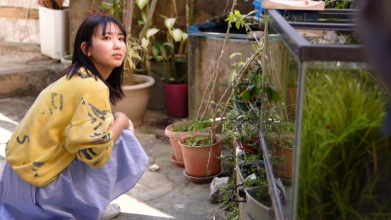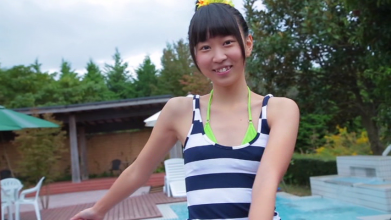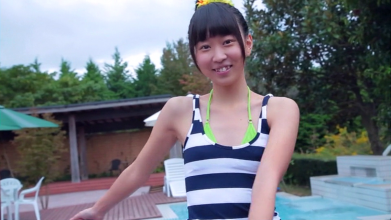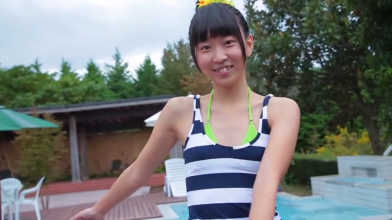Uploading more stuff, just got LCBD-00621 @ 1080p60 put up, first time on Akiba again. I've got a good process going on, so for right now I'm uploading all the missing videos at the ~4gb range right now from BR discs with no enhancements, just basic encoding. LCBD-00621 ThreadNice! I'll be looking forward to seeing them!
And I'm currently watching it now and I think I have to agree!I think she's looking incredible
I hope she'll keep making videos and continue her career for a long time
I'm quite happy with how this version looks, I don't have any complaints. But of course if you upload a higher quality version later on I'd happy to upgrade to that one!
Fumina Suzuki - AI Upscaling and Fan Collection
- Thread starter NuckChorris
- Start date
-
Akiba-Online is sponsored by FileJoker.
FileJoker is a required filehost for all new posts and content replies in the Direct Downloads subforums.
Failure to include FileJoker links for Direct Download posts will result in deletion of your posts or worse.
For more information see this thread.
You are using an out of date browser. It may not display this or other websites correctly.
You should upgrade or use an alternative browser.
You should upgrade or use an alternative browser.
Thanks again, for the work you're doing!Uploading more stuff, just got LCBD-00621 @ 1080p60 put up, first time on Akiba again. I've got a good process going on, so for right now I'm uploading all the
General
Complete name : LCBD-01013.mp4
Format : MPEG-4
Format profile : JVT
Codec ID : avc1 (isom/avc1)
File size : 3.79 GiB
Duration : 1 h 51 min
Overall bit rate mode : Variable
Overall bit rate : 4 890 kb/s
Encoded date : UTC 2021-09-03 19:23:44
Tagged date : UTC 2021-09-03 19:23:44
Writing application : Hybrid 2021.07.18.1
Video
ID : 1
Format : AVC
Format/Info : Advanced Video Codec
Format profile : High@L5
Format settings : CABAC / 4 Ref Frames
Format settings, CABAC : Yes
Format settings, Reference frames : 4 frames
Codec ID : avc1
Codec ID/Info : Advanced Video Coding
Duration : 1 h 51 min
Source duration : 1 h 51 min
Bit rate : 4 688 kb/s
Maximum bit rate : 34.7 Mb/s
Width : 1 920 pixels
Height : 1 080 pixels
Display aspect ratio : 16:9
Frame rate mode : Constant
Frame rate : 59.940 (60000/1001) FPS
Color space : YUV
Chroma subsampling : 4:2:0
Bit depth : 8 bits
Scan type : Progressive
Bits/(Pixel*Frame) : 0.038
Stream size : 3.64 GiB (96%)
Source stream size : 3.64 GiB (96%)
Writing library : x264 core 164 r3065 ae03d92
Encoding settings : cabac=1 / ref=3 / deblock=1:0:0 / analyse=0x3:0x111 / me=hex / subme=5 / psy=1 / psy_rd=1.00:0.00 / mixed_ref=0 / me_range=16 / chroma_me=1 / trellis=0 / 8x8dct=1 / cqm=0 / deadzone=21,11 / fast_pskip=0 / chroma_qp_offset=0 / threads=21 / lookahead_threads=5 / sliced_threads=0 / nr=0 / decimate=1 / interlaced=0 / bluray_compat=0 / constrained_intra=0 / bframes=3 / b_pyramid=2 / b_adapt=0 / b_bias=0 / direct=3 / weightb=1 / open_gop=0 / weightp=1 / keyint=250 / keyint_min=25 / scenecut=40 / intra_refresh=0 / rc_lookahead=40 / rc=crf / mbtree=1 / crf=18.0 / qcomp=0.50 / qpmin=0 / qpmax=51 / qpstep=4 / vbv_maxrate=168750 / vbv_bufsize=168750 / crf_max=0.0 / nal_hrd=none / filler=0 / ip_ratio=1.40 / aq=1:0.00
Language : English
Encoded date : UTC 2021-09-03 19:23:44
Tagged date : UTC 2021-09-03 19:24:02
Color range : Limited
Matrix coefficients : BT.709
Codec configuration box : avcC
Audio
ID : 2
Format : AAC LC
Format/Info : Advanced Audio Codec Low Complexity
Codec ID : mp4a-40-2
Duration : 1 h 51 min
Bit rate mode : Variable
Bit rate : 192 kb/s
Maximum bit rate : 224 kb/s
Channel(s) : 2 channels
Channel layout : L R
Sampling rate : 48.0 kHz
Frame rate : 46.875 FPS (1024 SPF)
Compression mode : Lossy
Stream size : 155 MiB (4%)
Title : Stereo
Language : Japanese
Encoded date : UTC 2021-09-03 19:23:59
Tagged date : UTC 2021-09-03 19:24:02
Menu
00:00:00.000 : Chapter 01
00:03:11.424 : Chapter 02
00:11:00.726 : Chapter 03
00:27:36.454 : Chapter 04
00:42:03.153 : Chapter 05
00:55:47.277 : Chapter 06
01:08:39.148 : Chapter 07
01:17:45.060 : Chapter 08
01:30:55.550 : Chapter 09
01:41:04.158 : Chapter 10
Complete name : LCBD-01013.mp4
Format : MPEG-4
Format profile : JVT
Codec ID : avc1 (isom/avc1)
File size : 3.79 GiB
Duration : 1 h 51 min
Overall bit rate mode : Variable
Overall bit rate : 4 890 kb/s
Encoded date : UTC 2021-09-03 19:23:44
Tagged date : UTC 2021-09-03 19:23:44
Writing application : Hybrid 2021.07.18.1
Video
ID : 1
Format : AVC
Format/Info : Advanced Video Codec
Format profile : High@L5
Format settings : CABAC / 4 Ref Frames
Format settings, CABAC : Yes
Format settings, Reference frames : 4 frames
Codec ID : avc1
Codec ID/Info : Advanced Video Coding
Duration : 1 h 51 min
Source duration : 1 h 51 min
Bit rate : 4 688 kb/s
Maximum bit rate : 34.7 Mb/s
Width : 1 920 pixels
Height : 1 080 pixels
Display aspect ratio : 16:9
Frame rate mode : Constant
Frame rate : 59.940 (60000/1001) FPS
Color space : YUV
Chroma subsampling : 4:2:0
Bit depth : 8 bits
Scan type : Progressive
Bits/(Pixel*Frame) : 0.038
Stream size : 3.64 GiB (96%)
Source stream size : 3.64 GiB (96%)
Writing library : x264 core 164 r3065 ae03d92
Encoding settings : cabac=1 / ref=3 / deblock=1:0:0 / analyse=0x3:0x111 / me=hex / subme=5 / psy=1 / psy_rd=1.00:0.00 / mixed_ref=0 / me_range=16 / chroma_me=1 / trellis=0 / 8x8dct=1 / cqm=0 / deadzone=21,11 / fast_pskip=0 / chroma_qp_offset=0 / threads=21 / lookahead_threads=5 / sliced_threads=0 / nr=0 / decimate=1 / interlaced=0 / bluray_compat=0 / constrained_intra=0 / bframes=3 / b_pyramid=2 / b_adapt=0 / b_bias=0 / direct=3 / weightb=1 / open_gop=0 / weightp=1 / keyint=250 / keyint_min=25 / scenecut=40 / intra_refresh=0 / rc_lookahead=40 / rc=crf / mbtree=1 / crf=18.0 / qcomp=0.50 / qpmin=0 / qpmax=51 / qpstep=4 / vbv_maxrate=168750 / vbv_bufsize=168750 / crf_max=0.0 / nal_hrd=none / filler=0 / ip_ratio=1.40 / aq=1:0.00
Language : English
Encoded date : UTC 2021-09-03 19:23:44
Tagged date : UTC 2021-09-03 19:24:02
Color range : Limited
Matrix coefficients : BT.709
Codec configuration box : avcC
Audio
ID : 2
Format : AAC LC
Format/Info : Advanced Audio Codec Low Complexity
Codec ID : mp4a-40-2
Duration : 1 h 51 min
Bit rate mode : Variable
Bit rate : 192 kb/s
Maximum bit rate : 224 kb/s
Channel(s) : 2 channels
Channel layout : L R
Sampling rate : 48.0 kHz
Frame rate : 46.875 FPS (1024 SPF)
Compression mode : Lossy
Stream size : 155 MiB (4%)
Title : Stereo
Language : Japanese
Encoded date : UTC 2021-09-03 19:23:59
Tagged date : UTC 2021-09-03 19:24:02
Menu
00:00:00.000 : Chapter 01
00:03:11.424 : Chapter 02
00:11:00.726 : Chapter 03
00:27:36.454 : Chapter 04
00:42:03.153 : Chapter 05
00:55:47.277 : Chapter 06
01:08:39.148 : Chapter 07
01:17:45.060 : Chapter 08
01:30:55.550 : Chapter 09
01:41:04.158 : Chapter 10
should be 6-9ref=3
it's totally trash, it should be umhme=hex
For HD-FHD it should be 24, 32me_range=16
it's trash, it should be 9-11subme=5
8bframes=3
2b_adapt=0
No "-tune film"
As a result visually video with with huge blocking, banding and too much size
The filtering scripts are probably full of bugs and hackwork too
Last edited:
I appreciate the constructive criticism, but not the negative criticism. If you're willing to lend some further advice, I encoded that video again using your recommended settings, but before I post it, I'm not that great at this. Do those shitty settings affect much when you encode with a high bitrate (i.e. >=20Mbps)? Basically should I re-encode starting from the raw BR rip? I have about an hour left on this upload to filejoker, I can PM you the link and tell me what you think. I'm at work RDP'd into my home so quality is too hard to discern over the RDP connection.
Hi everyone, finally had a minute to join your thread.
The second pic is the original ISO, the first is mp4, re-rendered with convolution. File size results 1GB vs 3.8GB ISO.
The DVD obviously was not interlaced. So the issue with the "lazy" yadif usage is not existing for that type of DVD.
Encoding is with Avidemux and avsproxy, I upscale within that, and additionally use also its convolutional sharpener, which seems not available anywhere else.
(Encoding speed, one pass all ready: 20-30 fps on 6-kernel ASUS notebook. No multithreading used in AviSynth, it would get much better then. Avidemux does MT.)
The process works meaningfully only as a whole package, with a chain of subtle improvements and corrections.
Dgdecode with or without deringing/deblocking,
optional luma pre-blending for certain interlacing problems (dark halo above bright horizontal lines), this is also a convolution,
deinterlacing if applicable (should switch to NNEDI family, that is used in the QTMGC scripts, use any deinterlacer but do nothing else here),
add grey borders,
main convolution (uses one-sided 5x5 impulse, therefor shifting of image required),
impulse for shown example: C50g5i="1 -11 19 -9 113 0 0 2 -5 -9 0 0 -4 4 7 0 0 -0 -1 -9 0 0 0 0 1" (naming convention to me tells the path along which I developed it),
shifting and cropping, using the border,
chroma shift fine correction (like 0.33, 0.5, 0.66, 1.0 negative, two of these values will normally do for x or y accordingy).
Send to Avidemux.
Some denoising, upscaling to 1600x968,
three times the internal convo sharpener (this is an "air band" trick from the audio world), here we can leave out one sharpener for the chroma if there is an artifact,
avisynth color filter (get rid of yellow-ish), contrast plugin on chroma-V to further reduce yellow,
downscale to 960x640, final crop,
some denoising in the encoder (8 to 20, depends), for encoding I use AQ from 19 to 21, choose your poison...
* Plz note that interlaced material comes out very smoothly with 60fps! The interlacing artifacts sometimes may look a bit like with old CRT color TV but with good electronics.
Quality of result is naturally a bit different each time, depending on the source material. Some come out even better, some are difficult to catch.
The goal is a lossless look with a bit of color correction (as most DVD rips are kind of yellow).
To me it seems there are only a few QTMGC rips of DVDs, that look better (because of smart deinterlacing).
However, my results (only DVD, no BR) could be further processed with smart frame-doubling (if 30fps), and with upscaling to perhaps 1024x780.
I have the scripts for many distinct ISO sources. Still, I don't spend the time to figure out how to code avs stuff more elegantly. When it works, it works.
The work is in the convolution impulses. These can correct a lot, like some halo becomes softer, and the color subsampling hits less ugly.
Pixel and staircase artifacts disappear almost a 100 percent.
It might be useful for those who want better DVD rips, as most uploaded rips look a bit blurred in comparison.
-
Corrections per DVD:
Check if it is interlaced, check if it needs input deblocking/deringing, check if it needs luma pre-blending (only for interlaced),
select the best impulses (takes experience), perhaps adjust an existing impulse,
adjust colors and gamma, adjust chroma shift, adjust cropping.
The second pic is the original ISO, the first is mp4, re-rendered with convolution. File size results 1GB vs 3.8GB ISO.
The DVD obviously was not interlaced. So the issue with the "lazy" yadif usage is not existing for that type of DVD.
Encoding is with Avidemux and avsproxy, I upscale within that, and additionally use also its convolutional sharpener, which seems not available anywhere else.
(Encoding speed, one pass all ready: 20-30 fps on 6-kernel ASUS notebook. No multithreading used in AviSynth, it would get much better then. Avidemux does MT.)
The process works meaningfully only as a whole package, with a chain of subtle improvements and corrections.
Dgdecode with or without deringing/deblocking,
optional luma pre-blending for certain interlacing problems (dark halo above bright horizontal lines), this is also a convolution,
deinterlacing if applicable (should switch to NNEDI family, that is used in the QTMGC scripts, use any deinterlacer but do nothing else here),
add grey borders,
main convolution (uses one-sided 5x5 impulse, therefor shifting of image required),
impulse for shown example: C50g5i="1 -11 19 -9 113 0 0 2 -5 -9 0 0 -4 4 7 0 0 -0 -1 -9 0 0 0 0 1" (naming convention to me tells the path along which I developed it),
shifting and cropping, using the border,
chroma shift fine correction (like 0.33, 0.5, 0.66, 1.0 negative, two of these values will normally do for x or y accordingy).
Send to Avidemux.
Some denoising, upscaling to 1600x968,
three times the internal convo sharpener (this is an "air band" trick from the audio world), here we can leave out one sharpener for the chroma if there is an artifact,
avisynth color filter (get rid of yellow-ish), contrast plugin on chroma-V to further reduce yellow,
downscale to 960x640, final crop,
some denoising in the encoder (8 to 20, depends), for encoding I use AQ from 19 to 21, choose your poison...
* Plz note that interlaced material comes out very smoothly with 60fps! The interlacing artifacts sometimes may look a bit like with old CRT color TV but with good electronics.
Quality of result is naturally a bit different each time, depending on the source material. Some come out even better, some are difficult to catch.
The goal is a lossless look with a bit of color correction (as most DVD rips are kind of yellow).
To me it seems there are only a few QTMGC rips of DVDs, that look better (because of smart deinterlacing).
However, my results (only DVD, no BR) could be further processed with smart frame-doubling (if 30fps), and with upscaling to perhaps 1024x780.
I have the scripts for many distinct ISO sources. Still, I don't spend the time to figure out how to code avs stuff more elegantly. When it works, it works.
The work is in the convolution impulses. These can correct a lot, like some halo becomes softer, and the color subsampling hits less ugly.
Pixel and staircase artifacts disappear almost a 100 percent.
It might be useful for those who want better DVD rips, as most uploaded rips look a bit blurred in comparison.
-
Corrections per DVD:
Check if it is interlaced, check if it needs input deblocking/deringing, check if it needs luma pre-blending (only for interlaced),
select the best impulses (takes experience), perhaps adjust an existing impulse,
adjust colors and gamma, adjust chroma shift, adjust cropping.
Attachments
Last edited:
file sizes:
4.31G original ISO
1.75G convolution
2.27G mp4 upload from somewhere else, good quality, far above average, but 60fps without data, every frame is just doubled.
4.31G original ISO
1.75G convolution
2.27G mp4 upload from somewhere else, good quality, far above average, but 60fps without data, every frame is just doubled.
Attachments
Last edited:
Long time with no update, but I had to take a step back after some medical issues came up that stopped me from working on this for the better part of 3 months, and I realized a large amount of work I did needed to be re-done. It was a bit disheartening to say the least, but I found the issue, corrected my workflow, and have now made really good progress. I'm realizing now, there's still so much I don't know, that I'm sure in 1 year I'll look back at where I'm at now, and think it's crap. I know I'm looking back at stuff I did 6mo ago, and it's not great. Either way, we learn and move on.
Currently, I've finished de-interlacing all the DVDs/ISOs I have. Going through DVD AI upscales currently, while I finish with some BR deinterlacing jobs (those take forever to do - each is around 24hrs). AI upscales take 9-12hrs from 480p60 -> 1080p60, with BR 1080p60 -> 4k60 taking roughly 40hrs. It's still going to be awhile, but I'm taking my time at each step and making sure I don't have to re-do a whole bunch of work again.....
I also put together a 2nd rig for my day 2 day stuff, so I can dedicate a pretty close to top of the line PC to simply upscaling, and I have my 8c/16t ryzen server encoding/deinterlacing jobs in batches, so I've got up to 24c/48t of modern Ryzen cpu's, 96gb of ram, and 1x RTX3080 + 1x RTX3060ti pumping away at this. The longest thing soon will be uploading all of this. I've got 2 internet connections at 2 places, plus I'm bringing a backup link at my main house up, so I will be uploading from 2 houses once I get the bulk of this work done.
If anyone has any requests, I can put those to the top of my list, I know one member was looking for LCBD-751, so I'm almost done getting the basic 1080p60 encode done and posting it up on filejoker and here.
Currently, I've finished de-interlacing all the DVDs/ISOs I have. Going through DVD AI upscales currently, while I finish with some BR deinterlacing jobs (those take forever to do - each is around 24hrs). AI upscales take 9-12hrs from 480p60 -> 1080p60, with BR 1080p60 -> 4k60 taking roughly 40hrs. It's still going to be awhile, but I'm taking my time at each step and making sure I don't have to re-do a whole bunch of work again.....
I also put together a 2nd rig for my day 2 day stuff, so I can dedicate a pretty close to top of the line PC to simply upscaling, and I have my 8c/16t ryzen server encoding/deinterlacing jobs in batches, so I've got up to 24c/48t of modern Ryzen cpu's, 96gb of ram, and 1x RTX3080 + 1x RTX3060ti pumping away at this. The longest thing soon will be uploading all of this. I've got 2 internet connections at 2 places, plus I'm bringing a backup link at my main house up, so I will be uploading from 2 houses once I get the bulk of this work done.
If anyone has any requests, I can put those to the top of my list, I know one member was looking for LCBD-751, so I'm almost done getting the basic 1080p60 encode done and posting it up on filejoker and here.
@Kevin_san what do you do for oversharpened sources? MMR-220 has an incredible amount of haloing, specially in the first scene, that I would love to try to get rid of without softening the image too much. The best I could do was use Blur() with AviSynth because I honestly don't know a lot. It kinda does the job but the softening stings.
You guys are hard workers. In my experience I found that deinterlacing before upscaling does not look very good, so I use the Dione DV model in VEAI with interlaced sources, and for progressive ones, I always use Gaia HQ, and in both cases I just reencode VEAI's output usually with CRF 20 on x265, with the ocasional cropping and spline-resizing when needed. So I guess my workflow is pretty straightforward.
You guys are hard workers. In my experience I found that deinterlacing before upscaling does not look very good, so I use the Dione DV model in VEAI with interlaced sources, and for progressive ones, I always use Gaia HQ, and in both cases I just reencode VEAI's output usually with CRF 20 on x265, with the ocasional cropping and spline-resizing when needed. So I guess my workflow is pretty straightforward.
Hi everyone,
Most algos that invent missing data, look awkward.
2. It is always the tricky matrix. I developed them over a long time.
There are several basic types. One is for originals with halo, one is for those without, and for both there is another distinction if extra blurred.
3. There is another type of halo that has only horizontal dark lines above bright objects. This comes from wrongful sharpening of an interlaced video.
For this I use pre-blending, which also in my case has to be tuned to the variant of the interlacing system. So it can be used also without halo, to improve deinterlacing artifacts.
4. You need to know for sure, when not to deinterlace, because the video you work on uses progressive frames. 60 fps makes only sense from truly interlaced material.
I have posted the whole set of scripts somewhere here on the board, I can give you the latest version ready for a hundred particular ISO's.
Many of the original ISOs are absolutely catastrophic, and a one-click re-rendering delivers practically nothing you would ever watch.
So, the processing makes it at least a bit more palpatable, and it takes very sensitive fine-tuning, including sub-pixel shifting of chroma. Like "mastering".
Average size is a bit over 2GB plus audio. A few are 3GB. Processing takes 3-7 hours.
You have to follow a strategy. You need to restore some decent skin color, you need to make eyes and teeth sparkle, and you need scenes, where the face looks really natural and shows depth. You need scenes, where the color is completely natural, not yellow-ish. Then the girl looks sexy, and viewers can enjoy.
In other words, these are your human parameters for the fine-tuning.
I use 960x640 because this removes almost every trace of pixelation, it makes it look like printed on good paper or like an aquarel painting.
Also, this is crucial because of the color subsampling. The encoder can optimize the chroma pane a little bit this way.
Higher upsampling just uses too much disk space for almost no gain. Current AI cannot recreate a healthy look by reinventing lost data. Too many disturbing "uncanny valley" artifacts.
..in your case, try C50g5b or C50g5h1
(but you need the script for the shifting and pre-blending, and then the postprocessing with the oversampled resharpening at pixel-level and smaller.)
The following series of "convolutional kernels" was made for videos with some or even very strong halo.
C50g5a ="3 -15 19 -1 121 0 0 2 -4 -12 0 0 -4 4 23 0 0 0 -1 -7 0 0 0 0 1" #C5.0g5a
C50g5b ="2 -15 23 -3 121 0 0 2 -5 -31 0 0 -4 4 37 0 0 0 -0 -3 0 0 0 0 6" #C5.0g5b AiShz5301 ßß
C50g5c ="1 -11 19 -9 113 0 0 2 -5 -21 0 0 -4 4 11 0 0 -0 -1 -7 0 0 0 0 3" #C5.0g5c HarukaM-DV13
C50g5d ="1 -11 19 -9 113 0 0 2 -5 -31 0 0 -4 4 23 0 0 -0 -1 -9 0 0 0 0 5" #C5.0g5d Nana7x
C50g5e ="1 -11 19 -9 113 0 0 2 -5 -17 0 0 -4 4 3 0 0 -0 -1 -3 0 0 0 0 1" #C5.0g5e FuminaYuna19
C50g5f ="2 -7 21 -17 113 0 0 2 -5 -13 0 0 -4 4 3 0 0 -0 -1 -3 0 0 0 0 1" #C5.0g5f
C50g5f1="3 -7 21 -17 113 0 0 2 -5 -11 0 0 -4 4 9 0 0 -0 -1 -9 0 0 0 0 5" #C5.0g5f1 KaedeKaga-ODYB
C50g5g ="1 -7 19 -17 113 0 0 2 -5 -13 0 0 -4 4 3 0 0 -0 -1 -3 0 0 0 0 1" #C5.0g5g #sharper
C50g5h ="1 -9 23 -5 121 0 0 2 -5 -31 0 0 -4 4 19 0 0 0 -0 -3 0 0 0 0 4" #C5.0g5h Saaya-5436,Saaya-11925
C50g5h1="3 -7 23 -5 121 0 0 2 -5 -17 0 0 -5 5 21 0 0 -0 -1 -5 0 0 0 0 3" #C5.0g5h1 ReimiTachibana_TSDV,
C50g5h2="3 -9 29 -7 121 0 0 2 -5 -23 0 0 -5 5 27 0 0 -0 -1 -9 0 0 0 0 5" #C5.0g5h2 AyameMisaki_LCDV-40314
C50g5h3="1 -9 23 -5 121 0 0 2 -5 -27 0 0 -4 4 17 0 0 0 -0 -9 0 0 0 0 4" #C5.0g5h3 Saaya-11927
C50g5h4="3 -7 29 -9 121 0 0 2 -5 -23 0 0 -5 5 27 0 0 -0 -1 -9 0 0 0 0 5" #C5.0g5h4 AyameMisaki_LCDV-40314
C50g5h5="3 -11 29 -9 121 0 0 2 -5 -23 0 0 -5 5 27 0 0 -0 -1 -9 0 0 0 0 5" #C5.0g5h5 Saaya-11164
C50g5i ="1 -11 19 -9 113 0 0 2 -5 -9 0 0 -4 4 7 0 0 -0 -1 -9 0 0 0 0 1" #C5.0g5i
C50g5j ="1 -11 19 -9 113 0 0 2 -5 -11 0 0 -4 4 5 0 0 -0 -1 -5 0 0 0 0 1" #C5.0g5j Kyouka; FuminaYuna19?
C50g5k ="1 -11 19 -9 113 0 0 2 -5 -7 0 0 -4 4 9 0 0 -0 -1 -7 0 0 0 0 3" #C5.0g5k
C50g5k1="2 -15 21 -7 113 0 0 2 -5 -13 0 0 -4 4 27 0 0 -0 -1 -11 0 0 0 0 4" #C5.0g5k1 RinaHirata
#C50g5k="1 -9 21 -7 121 0 0 2 -5 -23 0 0 -4 4 13 0 0 0 -0 -9 0 0 0 0 4" #C5.0g5k
C50g5l ="3 -7 21 -17 121 0 0 2 -5 -31 0 0 -4 4 19 0 0 0 -0 -3 0 0 0 0 4" #C5.0g5l Yukino-DDD068
C50g5l1="5 -13 21 -23 121 0 0 2 -5 -31 0 0 -4 4 21 0 0 0 -0 -11 0 0 0 0 5" #C5.0g5l1 *** SakuraOtawa_TSDS-42372
C50g5l2="5 -13 21 -23 121 0 0 2 -5 -27 0 0 -4 4 21 0 0 0 -0 -13 0 0 0 0 4" #C5.0g5l2 *** Nanoka093
C50g5l3="2 -7 21 -17 121 0 0 2 -5 -9 0 0 -4 4 7 0 0 0 -1 -9 0 0 0 0 4" #C5.0g5l3 ??
C50g5m ="1 -9 21 -7 121 0 0 2 -5 -11 0 0 -4 4 15 0 0 0 -0 -5 0 0 0 0 3" #C5.0g5m AsukaKishi_LCDV-40560 + C62a1
C50g5n ="1 -11 19 -9 113 0 0 2 -5 -17 0 0 -4 4 11 0 0 -0 -1 -5 0 0 0 0 3" #C5.0g5n ** ErikaFujm
C50g5o ="1 -11 19 -9 113 0 0 2 -4 -7 0 0 -4 4 11 0 0 -0 -1 -5 0 0 0 0 3" #C5.0g5o **
C50g5p ="1 -11 19 -9 113 0 0 2 -5 -17 0 0 -4 3 17 0 0 -0 -1 -5 0 0 0 0 5" #C5.0g5p
C50g5q ="3 -9 21 -9 113 0 0 2 -5 -13 0 0 -4 3 13 0 0 -0 -1 -11 0 0 0 0 5" #C5.0g5q NTak216
de-halo needs low value of coefficient #4 and a high value of #3
#1 compensates ringing/echo
#2 compensates for wider blur
#5 is the anchor = original data
#10 is the sharpener for y direction. this continues with #15 (dehalo), #20 (wide deblur), #25 (dering)
Below, I will post a bunch of further screenshot examples. Those that are blurred, have a very sick original, that was already totally destroyed with too much of MPEG-2 compression.
I use the x264 denoiser quite heavily. You might discover that some details become better than in the original. There are a few originals among the pics, you know which, because they are 720x480, while my results have to be 960x640 (I did not find one single player on Windows that cannot run these.)
1. You cannot completely remove that, because it becomes nonlinear, and data has been deleted by the artifact.@Kevin_san what do you do for oversharpened sources?
Most algos that invent missing data, look awkward.
2. It is always the tricky matrix. I developed them over a long time.
There are several basic types. One is for originals with halo, one is for those without, and for both there is another distinction if extra blurred.
3. There is another type of halo that has only horizontal dark lines above bright objects. This comes from wrongful sharpening of an interlaced video.
For this I use pre-blending, which also in my case has to be tuned to the variant of the interlacing system. So it can be used also without halo, to improve deinterlacing artifacts.
4. You need to know for sure, when not to deinterlace, because the video you work on uses progressive frames. 60 fps makes only sense from truly interlaced material.
I have posted the whole set of scripts somewhere here on the board, I can give you the latest version ready for a hundred particular ISO's.
Many of the original ISOs are absolutely catastrophic, and a one-click re-rendering delivers practically nothing you would ever watch.
So, the processing makes it at least a bit more palpatable, and it takes very sensitive fine-tuning, including sub-pixel shifting of chroma. Like "mastering".
Average size is a bit over 2GB plus audio. A few are 3GB. Processing takes 3-7 hours.
You have to follow a strategy. You need to restore some decent skin color, you need to make eyes and teeth sparkle, and you need scenes, where the face looks really natural and shows depth. You need scenes, where the color is completely natural, not yellow-ish. Then the girl looks sexy, and viewers can enjoy.
In other words, these are your human parameters for the fine-tuning.
I use 960x640 because this removes almost every trace of pixelation, it makes it look like printed on good paper or like an aquarel painting.
Also, this is crucial because of the color subsampling. The encoder can optimize the chroma pane a little bit this way.
Higher upsampling just uses too much disk space for almost no gain. Current AI cannot recreate a healthy look by reinventing lost data. Too many disturbing "uncanny valley" artifacts.
..in your case, try C50g5b or C50g5h1
(but you need the script for the shifting and pre-blending, and then the postprocessing with the oversampled resharpening at pixel-level and smaller.)
The following series of "convolutional kernels" was made for videos with some or even very strong halo.
C50g5a ="3 -15 19 -1 121 0 0 2 -4 -12 0 0 -4 4 23 0 0 0 -1 -7 0 0 0 0 1" #C5.0g5a
C50g5b ="2 -15 23 -3 121 0 0 2 -5 -31 0 0 -4 4 37 0 0 0 -0 -3 0 0 0 0 6" #C5.0g5b AiShz5301 ßß
C50g5c ="1 -11 19 -9 113 0 0 2 -5 -21 0 0 -4 4 11 0 0 -0 -1 -7 0 0 0 0 3" #C5.0g5c HarukaM-DV13
C50g5d ="1 -11 19 -9 113 0 0 2 -5 -31 0 0 -4 4 23 0 0 -0 -1 -9 0 0 0 0 5" #C5.0g5d Nana7x
C50g5e ="1 -11 19 -9 113 0 0 2 -5 -17 0 0 -4 4 3 0 0 -0 -1 -3 0 0 0 0 1" #C5.0g5e FuminaYuna19
C50g5f ="2 -7 21 -17 113 0 0 2 -5 -13 0 0 -4 4 3 0 0 -0 -1 -3 0 0 0 0 1" #C5.0g5f
C50g5f1="3 -7 21 -17 113 0 0 2 -5 -11 0 0 -4 4 9 0 0 -0 -1 -9 0 0 0 0 5" #C5.0g5f1 KaedeKaga-ODYB
C50g5g ="1 -7 19 -17 113 0 0 2 -5 -13 0 0 -4 4 3 0 0 -0 -1 -3 0 0 0 0 1" #C5.0g5g #sharper
C50g5h ="1 -9 23 -5 121 0 0 2 -5 -31 0 0 -4 4 19 0 0 0 -0 -3 0 0 0 0 4" #C5.0g5h Saaya-5436,Saaya-11925
C50g5h1="3 -7 23 -5 121 0 0 2 -5 -17 0 0 -5 5 21 0 0 -0 -1 -5 0 0 0 0 3" #C5.0g5h1 ReimiTachibana_TSDV,
C50g5h2="3 -9 29 -7 121 0 0 2 -5 -23 0 0 -5 5 27 0 0 -0 -1 -9 0 0 0 0 5" #C5.0g5h2 AyameMisaki_LCDV-40314
C50g5h3="1 -9 23 -5 121 0 0 2 -5 -27 0 0 -4 4 17 0 0 0 -0 -9 0 0 0 0 4" #C5.0g5h3 Saaya-11927
C50g5h4="3 -7 29 -9 121 0 0 2 -5 -23 0 0 -5 5 27 0 0 -0 -1 -9 0 0 0 0 5" #C5.0g5h4 AyameMisaki_LCDV-40314
C50g5h5="3 -11 29 -9 121 0 0 2 -5 -23 0 0 -5 5 27 0 0 -0 -1 -9 0 0 0 0 5" #C5.0g5h5 Saaya-11164
C50g5i ="1 -11 19 -9 113 0 0 2 -5 -9 0 0 -4 4 7 0 0 -0 -1 -9 0 0 0 0 1" #C5.0g5i
C50g5j ="1 -11 19 -9 113 0 0 2 -5 -11 0 0 -4 4 5 0 0 -0 -1 -5 0 0 0 0 1" #C5.0g5j Kyouka; FuminaYuna19?
C50g5k ="1 -11 19 -9 113 0 0 2 -5 -7 0 0 -4 4 9 0 0 -0 -1 -7 0 0 0 0 3" #C5.0g5k
C50g5k1="2 -15 21 -7 113 0 0 2 -5 -13 0 0 -4 4 27 0 0 -0 -1 -11 0 0 0 0 4" #C5.0g5k1 RinaHirata
#C50g5k="1 -9 21 -7 121 0 0 2 -5 -23 0 0 -4 4 13 0 0 0 -0 -9 0 0 0 0 4" #C5.0g5k
C50g5l ="3 -7 21 -17 121 0 0 2 -5 -31 0 0 -4 4 19 0 0 0 -0 -3 0 0 0 0 4" #C5.0g5l Yukino-DDD068
C50g5l1="5 -13 21 -23 121 0 0 2 -5 -31 0 0 -4 4 21 0 0 0 -0 -11 0 0 0 0 5" #C5.0g5l1 *** SakuraOtawa_TSDS-42372
C50g5l2="5 -13 21 -23 121 0 0 2 -5 -27 0 0 -4 4 21 0 0 0 -0 -13 0 0 0 0 4" #C5.0g5l2 *** Nanoka093
C50g5l3="2 -7 21 -17 121 0 0 2 -5 -9 0 0 -4 4 7 0 0 0 -1 -9 0 0 0 0 4" #C5.0g5l3 ??
C50g5m ="1 -9 21 -7 121 0 0 2 -5 -11 0 0 -4 4 15 0 0 0 -0 -5 0 0 0 0 3" #C5.0g5m AsukaKishi_LCDV-40560 + C62a1
C50g5n ="1 -11 19 -9 113 0 0 2 -5 -17 0 0 -4 4 11 0 0 -0 -1 -5 0 0 0 0 3" #C5.0g5n ** ErikaFujm
C50g5o ="1 -11 19 -9 113 0 0 2 -4 -7 0 0 -4 4 11 0 0 -0 -1 -5 0 0 0 0 3" #C5.0g5o **
C50g5p ="1 -11 19 -9 113 0 0 2 -5 -17 0 0 -4 3 17 0 0 -0 -1 -5 0 0 0 0 5" #C5.0g5p
C50g5q ="3 -9 21 -9 113 0 0 2 -5 -13 0 0 -4 3 13 0 0 -0 -1 -11 0 0 0 0 5" #C5.0g5q NTak216
de-halo needs low value of coefficient #4 and a high value of #3
#1 compensates ringing/echo
#2 compensates for wider blur
#5 is the anchor = original data
#10 is the sharpener for y direction. this continues with #15 (dehalo), #20 (wide deblur), #25 (dering)
Below, I will post a bunch of further screenshot examples. Those that are blurred, have a very sick original, that was already totally destroyed with too much of MPEG-2 compression.
I use the x264 denoiser quite heavily. You might discover that some details become better than in the original. There are a few originals among the pics, you know which, because they are 720x480, while my results have to be 960x640 (I did not find one single player on Windows that cannot run these.)
Last edited:
Here are some examples, perhaps we should create a particular thread for such?
You may see some off pixels by the deinterlacer. When you let the video play, this practically disappears, or looks like a very good old-style 2000 USD tube TV, with a little bobbing and shimmering.
Pics #1 and #6 had serious halo and ringing problems. Pics #2 and #3 are showing that sometimes a little bit of sharpening beyond the original is possible.
Please note also, that the videos look excellent on tablets, the formula also adds a particular effect that makes the whole thing more "3D" and more brilliant when size gets reduced by the playing app in a smaller frame.
You may see some off pixels by the deinterlacer. When you let the video play, this practically disappears, or looks like a very good old-style 2000 USD tube TV, with a little bobbing and shimmering.
Pics #1 and #6 had serious halo and ringing problems. Pics #2 and #3 are showing that sometimes a little bit of sharpening beyond the original is possible.
Please note also, that the videos look excellent on tablets, the formula also adds a particular effect that makes the whole thing more "3D" and more brilliant when size gets reduced by the playing app in a smaller frame.
Attachments
-
 Saaya_PCBG-11164-c62b2'50g5k-4s-c.png1.1 MB · Views: 175
Saaya_PCBG-11164-c62b2'50g5k-4s-c.png1.1 MB · Views: 175 -
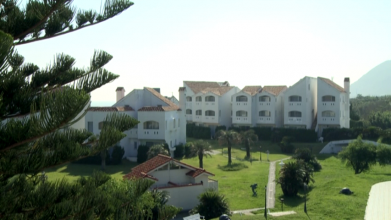 vlcsnap-2022-01-11-09h07m38s737.png491.2 KB · Views: 158
vlcsnap-2022-01-11-09h07m38s737.png491.2 KB · Views: 158 -
 vlcsnap-2022-01-11-09h01m53s494.png566.6 KB · Views: 162
vlcsnap-2022-01-11-09h01m53s494.png566.6 KB · Views: 162 -
 vlcsnap-2022-01-09-01h38m14s791.png383.1 KB · Views: 171
vlcsnap-2022-01-09-01h38m14s791.png383.1 KB · Views: 171 -
 vlcsnap-2022-01-09-01h38m08s205.png826.1 KB · Views: 172
vlcsnap-2022-01-09-01h38m08s205.png826.1 KB · Views: 172 -
 vlcsnap-2021-12-27-07h08m42s081.png799.1 KB · Views: 178
vlcsnap-2021-12-27-07h08m42s081.png799.1 KB · Views: 178 -
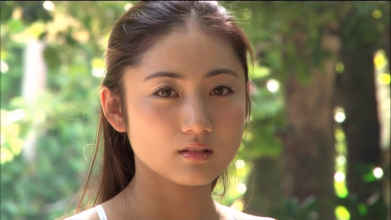 vlcsnap-2021-12-27-07h03m20s827.png815.8 KB · Views: 166
vlcsnap-2021-12-27-07h03m20s827.png815.8 KB · Views: 166 -
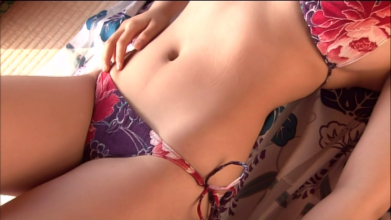 vlcsnap-2021-12-26-18h25m28s103.png817 KB · Views: 161
vlcsnap-2021-12-26-18h25m28s103.png817 KB · Views: 161 -
 vlcsnap-2021-12-04-13h56m04s019.png648.9 KB · Views: 154
vlcsnap-2021-12-04-13h56m04s019.png648.9 KB · Views: 154 -
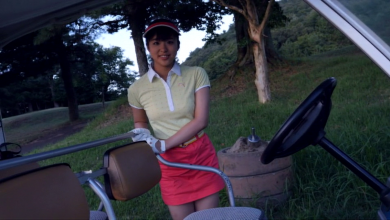 vlcsnap-2021-12-04-01h03m57s802.png983.4 KB · Views: 157
vlcsnap-2021-12-04-01h03m57s802.png983.4 KB · Views: 157 -
 vlcsnap-2021-12-04-00h57m50s761.png708 KB · Views: 158
vlcsnap-2021-12-04-00h57m50s761.png708 KB · Views: 158 -
 vlcsnap-2021-11-08-17h42m02s205.png1 MB · Views: 166
vlcsnap-2021-11-08-17h42m02s205.png1 MB · Views: 166 -
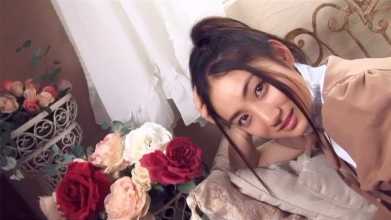 vlcsnap-2021-11-04-09h03m03s536.png903.1 KB · Views: 154
vlcsnap-2021-11-04-09h03m03s536.png903.1 KB · Views: 154 -
 vlcsnap-2021-10-25-02h39m20s004.png856.4 KB · Views: 167
vlcsnap-2021-10-25-02h39m20s004.png856.4 KB · Views: 167 -
 vlcsnap-2021-10-02-21h29m46s879.png1,017 KB · Views: 167
vlcsnap-2021-10-02-21h29m46s879.png1,017 KB · Views: 167 -
 vlcsnap-2021-10-02-21h18m57s900.png748.2 KB · Views: 177
vlcsnap-2021-10-02-21h18m57s900.png748.2 KB · Views: 177 -
 vlcsnap-2021-10-02-16h47m56s017.png601.5 KB · Views: 167
vlcsnap-2021-10-02-16h47m56s017.png601.5 KB · Views: 167 -
 vlcsnap-2021-10-02-16h47m53s317.png912.4 KB · Views: 163
vlcsnap-2021-10-02-16h47m53s317.png912.4 KB · Views: 163 -
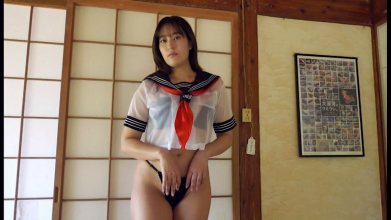 vlcsnap-2021-10-01-16h56m48s094.png853 KB · Views: 169
vlcsnap-2021-10-01-16h56m48s094.png853 KB · Views: 169 -
 vlcsnap-2021-10-01-16h40m25s075.png1.1 MB · Views: 152
vlcsnap-2021-10-01-16h40m25s075.png1.1 MB · Views: 152 -
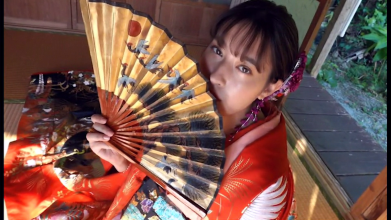 vlcsnap-2021-10-01-16h38m29s497.png1.1 MB · Views: 155
vlcsnap-2021-10-01-16h38m29s497.png1.1 MB · Views: 155 -
 vlcsnap-2022-01-01-01h11m27s654.png1.1 MB · Views: 172
vlcsnap-2022-01-01-01h11m27s654.png1.1 MB · Views: 172 -
 vlcsnap-2022-01-01-01h11m23s562.png661.2 KB · Views: 164
vlcsnap-2022-01-01-01h11m23s562.png661.2 KB · Views: 164
Last edited:
Many of the following were very difficult. Saaya above as well. Some originals very old. Some had serious halo and ringing artifacts.
Watch the Narumi Okawa set. If you know the original, and perhaps tried to sharpen it, you might notice how well the ringing was defeated. It works not always that well, though.
Watch the Narumi Okawa set. If you know the original, and perhaps tried to sharpen it, you might notice how well the ringing was defeated. It works not always that well, though.
Attachments
-
 vlcsnap-2022-05-14-19h44m24s865.png911.4 KB · Views: 160
vlcsnap-2022-05-14-19h44m24s865.png911.4 KB · Views: 160 -
 vlcsnap-2022-04-21-15h10m13s682.png965.3 KB · Views: 151
vlcsnap-2022-04-21-15h10m13s682.png965.3 KB · Views: 151 -
 vlcsnap-2022-04-21-15h09m33s470.png899.3 KB · Views: 146
vlcsnap-2022-04-21-15h09m33s470.png899.3 KB · Views: 146 -
 vlcsnap-2022-01-24-17h53m20s876.png808.6 KB · Views: 155
vlcsnap-2022-01-24-17h53m20s876.png808.6 KB · Views: 155 -
 vlcsnap-2022-01-20-17h43m08s658.png1 MB · Views: 156
vlcsnap-2022-01-20-17h43m08s658.png1 MB · Views: 156 -
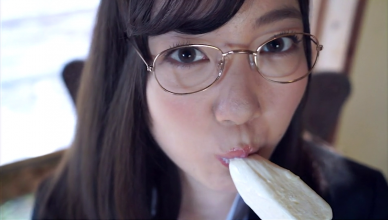 vlcsnap-2022-01-20-17h40m07s954.png708.9 KB · Views: 149
vlcsnap-2022-01-20-17h40m07s954.png708.9 KB · Views: 149 -
 vlcsnap-2022-01-20-17h37m14s012.png967.2 KB · Views: 142
vlcsnap-2022-01-20-17h37m14s012.png967.2 KB · Views: 142 -
 vlcsnap-2022-01-20-16h56m56s270.png715.9 KB · Views: 137
vlcsnap-2022-01-20-16h56m56s270.png715.9 KB · Views: 137 -
 vlcsnap-2022-01-20-16h56m00s118.png645.9 KB · Views: 141
vlcsnap-2022-01-20-16h56m00s118.png645.9 KB · Views: 141 -
 vlcsnap-2022-05-18-03h48m04s306.png709.1 KB · Views: 149
vlcsnap-2022-05-18-03h48m04s306.png709.1 KB · Views: 149 -
 vlcsnap-2022-01-20-16h54m38s069.png949.7 KB · Views: 152
vlcsnap-2022-01-20-16h54m38s069.png949.7 KB · Views: 152 -
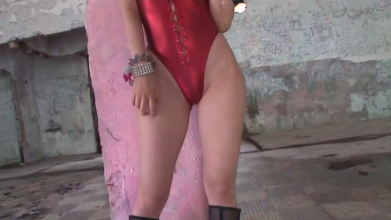 vlcsnap-2022-01-18-09h19m17s965.png802.2 KB · Views: 151
vlcsnap-2022-01-18-09h19m17s965.png802.2 KB · Views: 151 -
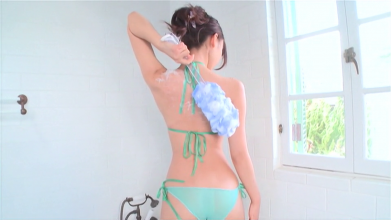 vlcsnap-2022-01-17-13h12m34s237.png680 KB · Views: 140
vlcsnap-2022-01-17-13h12m34s237.png680 KB · Views: 140 -
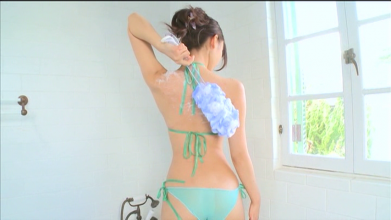 vlcsnap-2022-01-17-13h12m30s833.png433.4 KB · Views: 130
vlcsnap-2022-01-17-13h12m30s833.png433.4 KB · Views: 130 -
 vlcsnap-2022-05-18-03h36m03s246.png818.4 KB · Views: 150
vlcsnap-2022-05-18-03h36m03s246.png818.4 KB · Views: 150 -
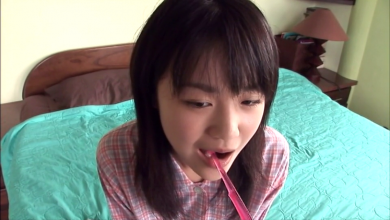 vlcsnap-2022-05-18-03h57m23s894.png866.9 KB · Views: 138
vlcsnap-2022-05-18-03h57m23s894.png866.9 KB · Views: 138 -
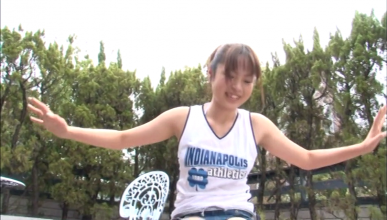 vlcsnap-2022-05-18-03h52m43s009.png862.8 KB · Views: 137
vlcsnap-2022-05-18-03h52m43s009.png862.8 KB · Views: 137 -
 vlcsnap-2022-05-18-03h49m06s534.png1.1 MB · Views: 147
vlcsnap-2022-05-18-03h49m06s534.png1.1 MB · Views: 147 -
 vlcsnap-2022-05-18-03h48m38s329.png761 KB · Views: 152
vlcsnap-2022-05-18-03h48m38s329.png761 KB · Views: 152 -
 vlcsnap-2022-05-18-03h47m20s731.png632.2 KB · Views: 138
vlcsnap-2022-05-18-03h47m20s731.png632.2 KB · Views: 138 -
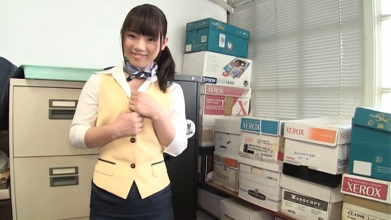 vlcsnap-2022-05-18-03h45m53s914.png859.6 KB · Views: 125
vlcsnap-2022-05-18-03h45m53s914.png859.6 KB · Views: 125 -
 vlcsnap-2022-05-18-03h42m32s826.png835.2 KB · Views: 132
vlcsnap-2022-05-18-03h42m32s826.png835.2 KB · Views: 132 -
 vlcsnap-2022-05-18-03h42m09s457.png585.5 KB · Views: 123
vlcsnap-2022-05-18-03h42m09s457.png585.5 KB · Views: 123 -
 vlcsnap-2022-05-18-03h40m56s369.png689.5 KB · Views: 129
vlcsnap-2022-05-18-03h40m56s369.png689.5 KB · Views: 129 -
 vlcsnap-2022-05-18-03h40m38s278.png764 KB · Views: 132
vlcsnap-2022-05-18-03h40m38s278.png764 KB · Views: 132 -
 vlcsnap-2022-05-18-03h38m27s787.png692.1 KB · Views: 131
vlcsnap-2022-05-18-03h38m27s787.png692.1 KB · Views: 131 -
 vlcsnap-2022-05-18-03h37m39s759.png754.6 KB · Views: 129
vlcsnap-2022-05-18-03h37m39s759.png754.6 KB · Views: 129 -
 vlcsnap-2022-05-18-03h34m51s674.png982 KB · Views: 161
vlcsnap-2022-05-18-03h34m51s674.png982 KB · Views: 161
Last edited:
Addendum
I scripted all these cover, profile, and gallery pics, if there are some. They will be shown for half a second each.
But the audio has to be edited manually, to insert silence or dummy music for these few seconds. Same for the moving menu and chapter cuts.
I did only a few audios so far. Video tuning took lots of time already. You can start from there.
---
I took remarks by Porni very seriously, and updated the parameters for compression. Looks definitely better. Processing time went up +70 percent though..
I scripted all these cover, profile, and gallery pics, if there are some. They will be shown for half a second each.
But the audio has to be edited manually, to insert silence or dummy music for these few seconds. Same for the moving menu and chapter cuts.
I did only a few audios so far. Video tuning took lots of time already. You can start from there.
---
I took remarks by Porni very seriously, and updated the parameters for compression. Looks definitely better. Processing time went up +70 percent though..
Last edited:
Recently, some upscaled videos are popping up in several places.
My opinion:
If it is an old DVD, result often does not reward the effort, unless some typical artifacts will get addressed in very targeted ways.
There are other problems besides resolution, that still make it look poor.
Sometimes 60fps does not work, because it was not interlaced but needs AI interpolation, or leave it at 30fps.
Sometimes, the production used interlacing so poor, that there are big staircase artifacts. So far, I know no smart processing about this. Upscaling makes no sense.
Sometimes, the chroma is off. Adjust the chroma shift on subpixel level, like -0.66 or something. It will be different in x and y directions.
Sometimes, there is halo, ringing, and wide blur or smearing. One solution might be to use my convolutional kernels after deinterlacing and before upscaling.
Sometimes, the color is still wrong. The conversion matrix was often not respected already in the post-production of the DVD. I am doing color adjustments to my taste. I dislike it, when the video is yellow-ish.
My opinion:
If it is an old DVD, result often does not reward the effort, unless some typical artifacts will get addressed in very targeted ways.
There are other problems besides resolution, that still make it look poor.
Sometimes 60fps does not work, because it was not interlaced but needs AI interpolation, or leave it at 30fps.
Sometimes, the production used interlacing so poor, that there are big staircase artifacts. So far, I know no smart processing about this. Upscaling makes no sense.
Sometimes, the chroma is off. Adjust the chroma shift on subpixel level, like -0.66 or something. It will be different in x and y directions.
Sometimes, there is halo, ringing, and wide blur or smearing. One solution might be to use my convolutional kernels after deinterlacing and before upscaling.
Sometimes, the color is still wrong. The conversion matrix was often not respected already in the post-production of the DVD. I am doing color adjustments to my taste. I dislike it, when the video is yellow-ish.
Last edited:
@NuckChorris Thanks for the remuxes, ripped almost everything with QTGMC and good encoding settings
Already available on torrents or someone can ask me to upload here
Already available on torrents or someone can ask me to upload here
Code:
├── [1.4G] ENFD-5294.mkv
├── [1.5G] ENFD-5383.mkv
├── [1.3G] ENFD-5427.mkv
├── [1.3G] ENFD-5501.mkv
├── [1.1G] ENFD-5585.mkv
├── [1.5G] ENFD-5665.mkv
├── [4.2G] LCBD-00589.mkv
├── [4.3G] LCBD-00621.mkv
├── [3.6G] LCBD-00675.mkv
├── [5.9G] LCBD-00691.mkv
├── [3.9G] LCBD-00721.mkv
├── [5.7G] LCBD-00751.mkv
├── [6.8G] LCBD-00903.mkv
├── [4.0G] LCBD-01013.mkv
├── [977M] LCDV-40540.mkv
├── [1.3G] SYD-421.mkv
└── [1.5G] TSDV-41645.mkvGeneral
Unique ID : 74414349794058204751249977989509474846 (0x37FBAEB5708855A939E44440F23CEA1E)
Complete name : LCBD-00691.mkv
Format : Matroska
Format version : Version 4
File size : 5.90 GiB
Duration : 1 h 40 min
Overall bit rate : 8 425 kb/s
Frame rate : 59.940 FPS
Encoded date : 2023-11-25 12:23:14 UTC
Writing application : mkvmerge v80.0 ('Roundabout') 64-bit
Writing library : libebml v1.4.4 + libmatroska v1.7.1
Video
ID : 1
Format : AVC
Format/Info : Advanced Video Codec
Format profile : High@L5
Format settings : CABAC / 8 Ref Frames
Format settings, CABAC : Yes
Format settings, Reference frames : 8 frames
Codec ID : V_MPEG4/ISO/AVC
Duration : 1 h 40 min
Bit rate : 8 335 kb/s
Width : 1 440 pixels
Height : 1 080 pixels
Display aspect ratio : 16:9
Original display aspect ratio : 4:3
Frame rate mode : Constant
Frame rate : 59.940 (60000/1001) FPS
Color space : YUV
Chroma subsampling : 4:2:0
Bit depth : 8 bits
Scan type : Progressive
Bits/(Pixel*Frame) : 0.089
Stream size : 5.84 GiB (99%)
Writing library : x264 core 164 r3108 31e19f9
Encoding settings : cabac=1 / ref=8 / deblock=1:-1:-1 / analyse=0x3:0x133 / me=umh / subme=9 / psy=1 / psy_rd=1.00:0.15 / mixed_ref=1 / me_range=32 / chroma_me=1 / trellis=2 / 8x8dct=1 / cqm=0 / deadzone=21,11 / fast_pskip=1 / chroma_qp_offset=-3 / threads=24 / lookahead_threads=4 / sliced_threads=0 / nr=0 / decimate=1 / interlaced=0 / bluray_compat=0 / constrained_intra=0 / bframes=8 / b_pyramid=2 / b_adapt=2 / b_bias=0 / direct=3 / weightb=1 / open_gop=0 / weightp=2 / keyint=600 / keyint_min=60 / scenecut=40 / intra_refresh=0 / rc_lookahead=60 / rc=crf / mbtree=1 / crf=19.0 / qcomp=0.60 / qpmin=0 / qpmax=69 / qpstep=4 / ip_ratio=1.40 / aq=1:1.00
Default : No
Forced : No
Audio
ID : 2
Format : Opus
Codec ID : A_OPUS
Duration : 1 h 40 min
Bit rate : 86.5 kb/s
Channel(s) : 2 channels
Channel layout : L R
Sampling rate : 48.0 kHz
Frame rate : 50.000 FPS (960 SPF)
Bit depth : 32 bits
Compression mode : Lossy
Stream size : 62.0 MiB (1%)
Title : Stereo
Language : Japanese
Default : Yes
Forced : No
Menu
00:00:00.000 : Chapter 02
00:12:18.370 : Chapter 03
00:20:55.720 : Chapter 04
00:32:33.751 : Chapter 05
00:39:48.385 : Chapter 06
00:50:31.027 : Chapter 07
00:57:20.636 : Chapter 08
01:07:21.203 : Chapter 09
01:16:43.865 : Chapter 10
01:29:32.466 : Chapter 11
Unique ID : 74414349794058204751249977989509474846 (0x37FBAEB5708855A939E44440F23CEA1E)
Complete name : LCBD-00691.mkv
Format : Matroska
Format version : Version 4
File size : 5.90 GiB
Duration : 1 h 40 min
Overall bit rate : 8 425 kb/s
Frame rate : 59.940 FPS
Encoded date : 2023-11-25 12:23:14 UTC
Writing application : mkvmerge v80.0 ('Roundabout') 64-bit
Writing library : libebml v1.4.4 + libmatroska v1.7.1
Video
ID : 1
Format : AVC
Format/Info : Advanced Video Codec
Format profile : High@L5
Format settings : CABAC / 8 Ref Frames
Format settings, CABAC : Yes
Format settings, Reference frames : 8 frames
Codec ID : V_MPEG4/ISO/AVC
Duration : 1 h 40 min
Bit rate : 8 335 kb/s
Width : 1 440 pixels
Height : 1 080 pixels
Display aspect ratio : 16:9
Original display aspect ratio : 4:3
Frame rate mode : Constant
Frame rate : 59.940 (60000/1001) FPS
Color space : YUV
Chroma subsampling : 4:2:0
Bit depth : 8 bits
Scan type : Progressive
Bits/(Pixel*Frame) : 0.089
Stream size : 5.84 GiB (99%)
Writing library : x264 core 164 r3108 31e19f9
Encoding settings : cabac=1 / ref=8 / deblock=1:-1:-1 / analyse=0x3:0x133 / me=umh / subme=9 / psy=1 / psy_rd=1.00:0.15 / mixed_ref=1 / me_range=32 / chroma_me=1 / trellis=2 / 8x8dct=1 / cqm=0 / deadzone=21,11 / fast_pskip=1 / chroma_qp_offset=-3 / threads=24 / lookahead_threads=4 / sliced_threads=0 / nr=0 / decimate=1 / interlaced=0 / bluray_compat=0 / constrained_intra=0 / bframes=8 / b_pyramid=2 / b_adapt=2 / b_bias=0 / direct=3 / weightb=1 / open_gop=0 / weightp=2 / keyint=600 / keyint_min=60 / scenecut=40 / intra_refresh=0 / rc_lookahead=60 / rc=crf / mbtree=1 / crf=19.0 / qcomp=0.60 / qpmin=0 / qpmax=69 / qpstep=4 / ip_ratio=1.40 / aq=1:1.00
Default : No
Forced : No
Audio
ID : 2
Format : Opus
Codec ID : A_OPUS
Duration : 1 h 40 min
Bit rate : 86.5 kb/s
Channel(s) : 2 channels
Channel layout : L R
Sampling rate : 48.0 kHz
Frame rate : 50.000 FPS (960 SPF)
Bit depth : 32 bits
Compression mode : Lossy
Stream size : 62.0 MiB (1%)
Title : Stereo
Language : Japanese
Default : Yes
Forced : No
Menu
00:00:00.000 : Chapter 02
00:12:18.370 : Chapter 03
00:20:55.720 : Chapter 04
00:32:33.751 : Chapter 05
00:39:48.385 : Chapter 06
00:50:31.027 : Chapter 07
00:57:20.636 : Chapter 08
01:07:21.203 : Chapter 09
01:16:43.865 : Chapter 10
01:29:32.466 : Chapter 11
Last edited:
Thanks so much everyone, currently there is plenty of Fumina out there, rendered in very high quality 4-7GB.
If it's you, thx even more.
I have meanwhile updated my own technology, the DFMT plays very smooth, though it's not QTGMC'd.
You see that the improvement is better than with the MMR example. It works for really poor originals.
See what it did about the face, and the thin door handle. I apologize for the lazy cutting.
SYD421/422 seem quite difficult, so far I found only remuxed MPEG2 versions. Trying later.
If it's you, thx even more.
I have meanwhile updated my own technology, the DFMT plays very smooth, though it's not QTGMC'd.
You see that the improvement is better than with the MMR example. It works for really poor originals.
See what it did about the face, and the thin door handle. I apologize for the lazy cutting.
SYD421/422 seem quite difficult, so far I found only remuxed MPEG2 versions. Trying later.
Attachments
it looks worse to me the lines on the wall and socks are blurrier, the blue sausage thing is better in places and worse in other places, and the next 2 so much wrong againThanks so much everyone, currently there is plenty of Fumina out there, rendered in very high quality 4-7GB.
If it's you, thx even more.
I have meanwhile updated my own technology, the DFMT plays very smooth, though it's not QTGMC'd.
You see that the improvement is better than with the MMR example. It works for really poor originals.
See what it did about the face, and the thin door handle. I apologize for the lazy cutting.
SYD421/422 seem quite difficult, so far I found only remuxed MPEG2 versions. Trying later.




